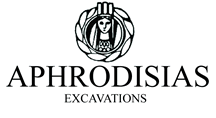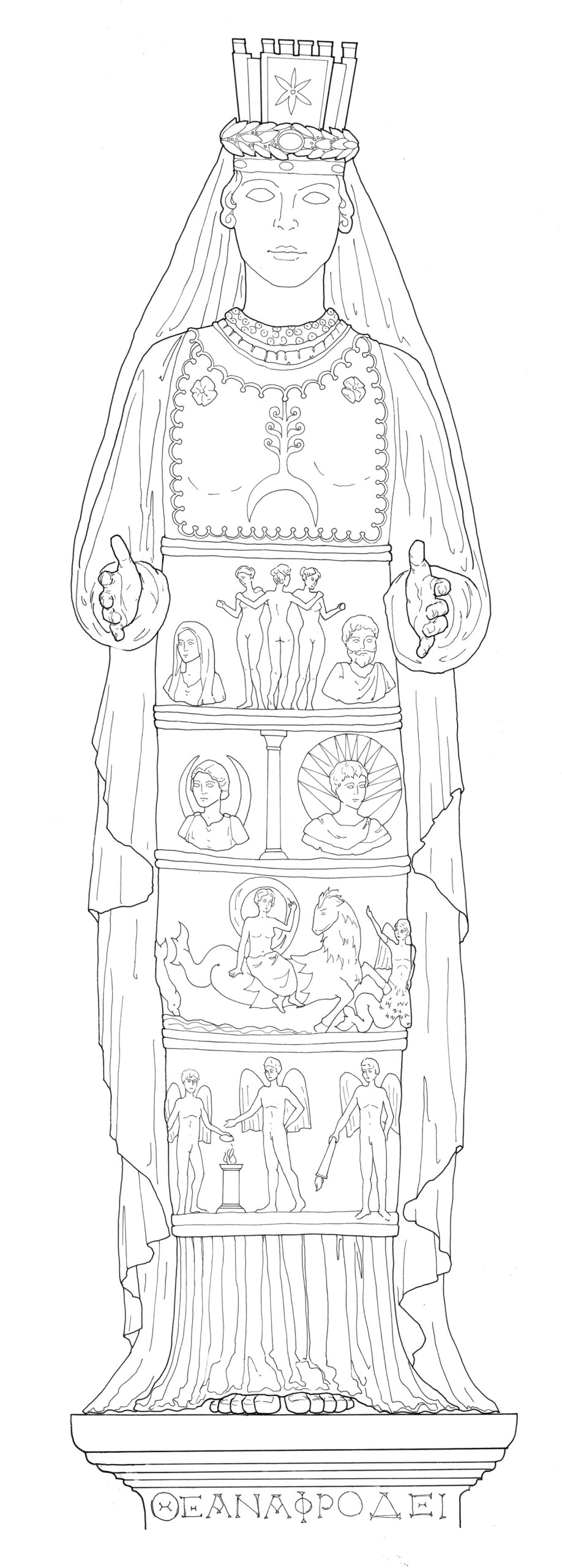Aphrodite of Aphrodisias
The statue illustrated is the largest and most complete version of the cult figure of the Aphrodite of Aphrodisias. It was made in the later second century AD for a position in the upper tier of seating in the Council House (Bouleuterion) where it was found. The statue followed closely the design of the goddess’ figure created in the hellenistic period for her temple. The design marked the point at which an earlier local fertility goddess was identified with the Aphrodite of the hellenic pantheon.
The statue stands stiffly and frontally, like an old Anatolian goddess, and was designed to recall that earlier identity, now subsumed in Aphrodite. The figure wears a tall headdress and veil and a thin dress covered by thick, hard cladding. The cladding is divided into a chest area and four lower zones. Each of the four zones contains figured decoration that concerns different aspects of Aphrodite: (1) the Three Graces, her handmaids; (2) Selene (Moon) and Helios (Sun), the permanent temporal extent of her realm; (3) Aphrodite in classical form on a sea-goat with tritons; and (4) three winged Erotes, her children and agents, engaged in sacrifice. The iconography of the statue was designed to combine the archaic aspects of the old local goddess with ideas of the classical and hellenistic Aphrodite.
Found at: Council House (Bouleuterion)






